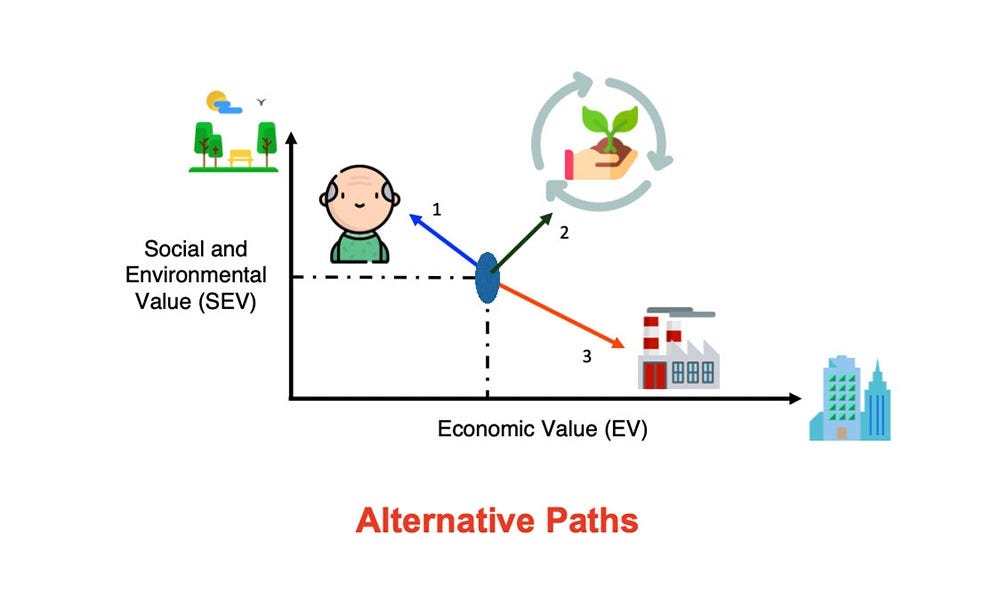Companies Face Calls to Consider Stakeholders Beyond Shareholders
By Roberto Gutiérrez

Because most companies still focus primarily on the bottom line of economic return, it can be a challenge to direct their attention toward social and environmental goals. As Sudhir Chadalavada states, there are barriers to go from a shareholder-centric to a stakeholder-centric perspective. It is one thing to intend to connect economic dimensions with positive social outcomes; it is another to successfully couple financial results with social and environmental contributions.
Some businesses, such as Certified B Corporations, are taking that path and considering that their economic success is an equally important outcome as social and environmental well-being. To become certified as a B Corp, businesses must demonstrate that their operations provide social and environmental benefit and benefit multiple stakeholders rather than just shareholders.
Current and future managers need to have ready-to-use tools, like the calculations that B Corporations make, to connect economic goals with social and environmental dimensions. One tool that portrays this connection highlights the meaning of social value: to improve or preserve the living conditions of those who cannot fend for themselves (vertical axis in the figure below).

The graph shows that the activities of an organization have both economic and socio-environmental components: At any moment, an activity may generate, among other outcomes, jobs, technological advances, infrastructure, tax payments, and goods and services. The figure also shows a number of possibilities an organization has. Alternative 1 demonstrates the decision to expend economic value to generate increasing socio-environmental value. Different sorts of philanthropy belong in this category. In Alternative 2, socio-environmental value and economic value are jointly generated: e.g., social investments that are aligned with a company’s business allow employees to use core competencies in a given socio-environmental undertaking. In Alternative 3, economic value (EV) increases at the expense of socio-environmental value (SEV). This third path is common to those companies whose productive processes pollute or discriminate against a given social group.
The slope of each of these alternatives indicates the quantity of EV created/consumed per unit of SEV. The graph illustrates both the trade–offsthat are traditionally assumed (e.g. destruction of SEV in order to generate EV, or expenditures of EV to generate SEV), as well as the possible trade–ons (e.g. the joint production of EV and SEV). The slopes also signal the distribution of value between stakeholders who are able to fend for themselves (and capture some EV) and those who need support (and benefit from SEV).
Throughout the 20th century we made a detrimental separation between these two realms: Businesses focused on generating EV, and nonprofit and public organizations have been dedicated to creating SEV. Only in the past few decades have we returned to consider the synergies among the social, environmental, and economic realms. If our social well-being and the environment have suffered from the ravages of market forces, why not turn the tables and direct these same forces toward the benefit of society and the environment?

When we use markets at the service of society and the environment, the discussions about goals and motivations lose relevance. If EV and SEV are created simultaneously, we need not know what is the underlying motivation behind this feat, nor is it necessary to engrave a triple bottom line in the organization’s statutes.
At any time, leaders of organizations may ask themselves how to increase EV and SEV. Nowadays, there is increasing evidence about the synergies between these types of values. For a company that has only considered the generation of EV, a first step is to explore how to create SEV through its operations. Down the line, the question of how to integrate SEV into the business strategy may be addressed.
Ambitious proposals to take care of different stakeholders are useful. However, as a society we will achieve more by being conscious of and acting on the synergies between social value and economic value creation. Not only will we all benefit from this value, but people will also find new purpose in participating in our economies.
Roberto Gutiérrez is an associate professor in the School of Management at the Universidad de los Andes (Bogotá, Colombia).
A version of this article was previously published by Conscious Company Media. B the Change gathers and shares the voices from within the movement of people using business as a force for good and the community of Certified B Corporations. The opinions expressed do not necessarily reflect those of the nonprofit B Lab.

Broadening Business Focus to Create Economic, Social and Environmental Value was originally published in B The Change on Medium, where people are continuing the conversation by highlighting and responding to this story.
Source: B the Change
